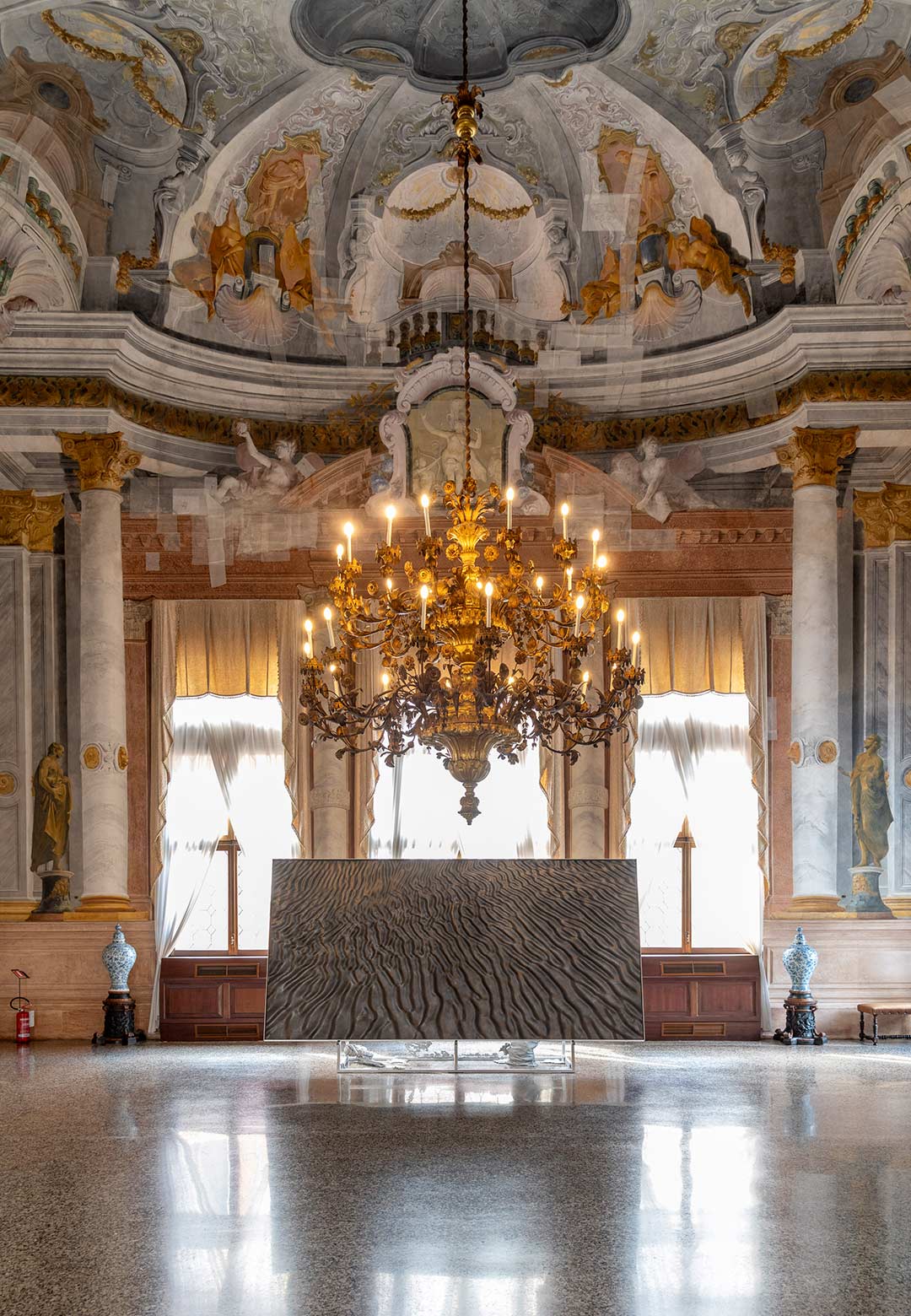At first glance, Italian artist Loris Cecchini's 'branching and proliferating' sculptures and the 18th century Italian art they are displayed among would appear to be in juxtaposition. However, despite the vastly different techniques employed and far-removed periods and artistic movements they are a part of, the venue's art and the new sculptural art installation attempt to break free of established geometry and the artificial boundary dividing the inside and outside.
The solo exhibition of Cecchini's artworks, Leaps, gaps and overlapping diagrams, curated by Luca Berta and Francesca Giubilei, in collaboration with Galleria Continua and VeniceArtFactory, is on display from September 21, 2024 - March 31, 2025, at the Ca' Rezzonico Museum in Venice, Italy.
Cecchini is best known for his site-specific, contemporary sculptures that merge nature, science and art in rhythmic abstraction. This ongoing art exhibition features his modular stainless steel and aluminium forms that depict the repeating patterns seen in molecules, cells and natural processes. He uses modern technology such as 3D scanning and microscopy to inspire sculptures that defy standard geometrical shapes and dissolve boundaries as they breach and branch into the halls and façade of Ca' Rezzonico.
The sculpture artist is quoted in the museum's press release as citing his goal of "trying to break the Euclidean box in sculpture [to] celebrate the geometry of everything." Euclid was an ancient Greek mathematician, considered the father of geometry for his systematic mapping of two and three-dimensional grids and spaces. Cecchini is more interested in what is left out of Euclid's highly ordered vision—shapes and processes that are non-linear, expansive and unbounded. Although his sculptures are based on scientific understanding and technology, they resist its rigid classifications, remaining true instead, to the unpredictability of nature and its irregular, fluid forms.
This defiance of straightforward geometry is the overlap between installation artist's sculptures and the Rococo frescoes and oil paintings by Giambattista Tiepolo, Jacopo Guarana, Giovanni Battista Crosato and Gaspare Diziani. Created for the former Venetian manor in the 18th-century, the artworks use the trompe l’oeil technique to create the illusion of a vast expanse of sky, depth and three dimensions, instead of the existing flat ceiling, transforming the gallery's architecture and pushing against rigid understandings of space.
In the same ballroom, works from Cecchini’s Zigzag Particles (2024) series expand outward and away in unpredictable directions, challenging perceptions of form, balance and gravity. The lack of a centre and distinguishable boundaries creates a sculpture that defies normative spatial logic and perception.
His other works from the Aeolian Landforms (2024) series create a fantastical window into a desert landscape. The paintings surrounding these contemporary works attempt something similar through their use of perspective, scale and realism, inviting viewers into the historical and mythological scenes they depict. For Leaps, gaps and overlapping diagrams, Cecchini's sculptures—non-representational and inspired by nature—coexist comfortably with the gallery's opulent baroque furniture and 18th-century art.
The museum's second floor houses more of this conversation between the historical and contemporary. Looking out on the views that inspired the famed Venetian painter Canaletto, is Cecchini's atonal sculpture Wallwaves 190 (2024), part of his Wallwave Vibrations (2012 - present) series. It imagines a reliably solid wall becoming liquid, with unexpected ripples spreading across its surface. Its interruption in the room's architecture is not dissimilar to the frescoes, opening up the ceiling to celestial expanses.
The final room contains the exhibition's conclusion, with Cecchini's Telescope I (2023) serving as not just an artwork, but an argument. The telescope points at the famous painting Il Mondo Novo (1791) by Giandomenico Tiepolo, which depicts a crowd gathered around a 'magic lantern', an early image projector used at the time to allow people to gaze into a different world from the one they lived in—one of fantasy, possibility and magic. The two works and their spatial relation perfectly illustrate the aims of Cecchini and the Rococo artists—breaking through normative reality, geometry and the confines of architecture to make something that oversteps and escapes these restrictions.
Through disparate bodies of work, the multidisciplinary art exhibited in Leaps, gaps and overlapping diagrams explores the connections and transitions between representational and abstract sculpture, the Rococo and contemporary art movements as well as technological and traditional mediums.
As the museum mentions, "Discrete or continuous, analogical or digital infinity. This is the conceptual spectrum that Loris Cecchini intends to explore in the exhibition project at Ca' Rezzonico, entering into a relationship with the masterpieces of 18th-century culture housed there without renouncing his choreographic instinct and aesthetic fascination as a lever for a tireless work of rethinking sculpture."
'Leaps, gaps and overlapping diagrams' is on view from September 21, 2024 - March 31, 2025, at Ca' Rezzonico, Museum of 18th Century, Venice, Italy.
(Text by Srishti Ojha, intern at STIR)






 Sign in with email
Sign in with email










What do you think?